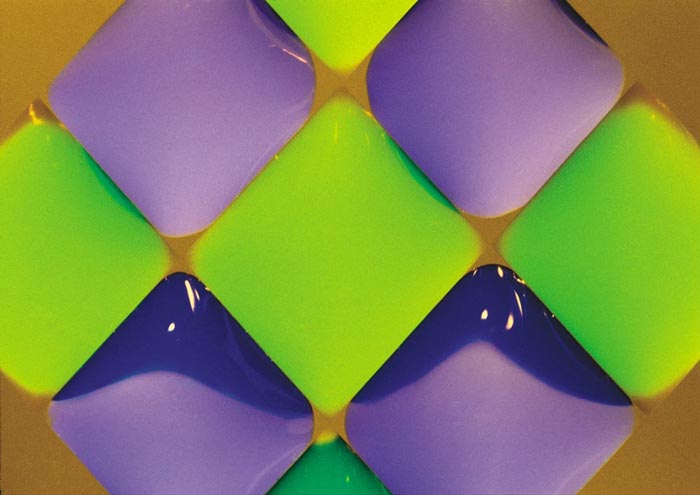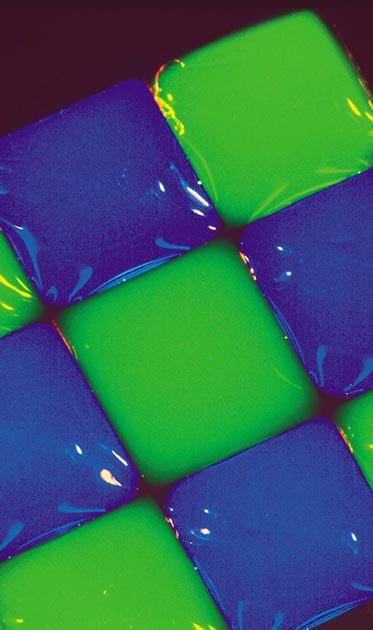Bouncing Out of Bounds
By Felice Frankel
In this new department, MIT research scientist and photographer Felice Frankel will explore visual representations of data and ideas. In this issue: square water droplets and the origins of soft lithography
In this new department, MIT research scientist and photographer Felice Frankel will explore visual representations of data and ideas. In this issue: square water droplets and the origins of soft lithography

DOI: 10.1511/2003.44.254
Images in science are finally gaining the respect and attention they deserve as powerful tools for communication and for advancing scientific thinking. In creating a new department for American Scientist, I intend to look at visual representations of scientific data and ideas through photography, drawing, digital imaging, modeling and other means of visualizing concepts. Some will be historical, others new. Future issues will look at the work of highly accomplished scientists and visual communicators, including questions and answers to further our understanding of technique. Sightings debuts with an image I made some time ago.
I ask the reader to "read" beyond your original response to an image, as you would read between the lines of an article. Consider these pictures not only as documentation but as visual seeds, inspiring ideas. Judge them by the standards you insist upon in your work.

Felice Frankel, from Envisioning Science
In the image above, hydrophobic lines micromachined into a hydrophilic self-assembled monolayer separate 4-millimeter-square drops of water colored with blue and green fluorescent dyes. The research underlying this image led to the development of "soft lithography," which allows nanometer-scale patterns to be etched on curved surfaces for the creation of complex micro-electromechanical devices.
When my colleagues and I submitted this image to Science, where it appeared as the cover image on September 4, 1992 (accompanying Abbott, N. L., J. P. Folkers and G. M. Whitesides, Science 257:1380–1382), the editors believed that it appeared ambiguous because of the blue-purple tones in the water drops at the bottom of the photograph. As the accompanying article explained, the drops are pinned at their edges by the tiny surface features and do not communicate. I had mistakenly held the bouncing card (see caption) in a way that created an irregular reflection from the surface of the colored water. Luckily, in this first experience submitting a photograph to a science journal, I became aware of the importance of clarity when making images in science.

Felice Frankel (Science 257:1380-1382)
Click "American Scientist" to access home page
American Scientist Comments and Discussion
To discuss our articles or comment on them, please share them and tag American Scientist on social media platforms. Here are links to our profiles on Twitter, Facebook, and LinkedIn.
If we re-share your post, we will moderate comments/discussion following our comments policy.